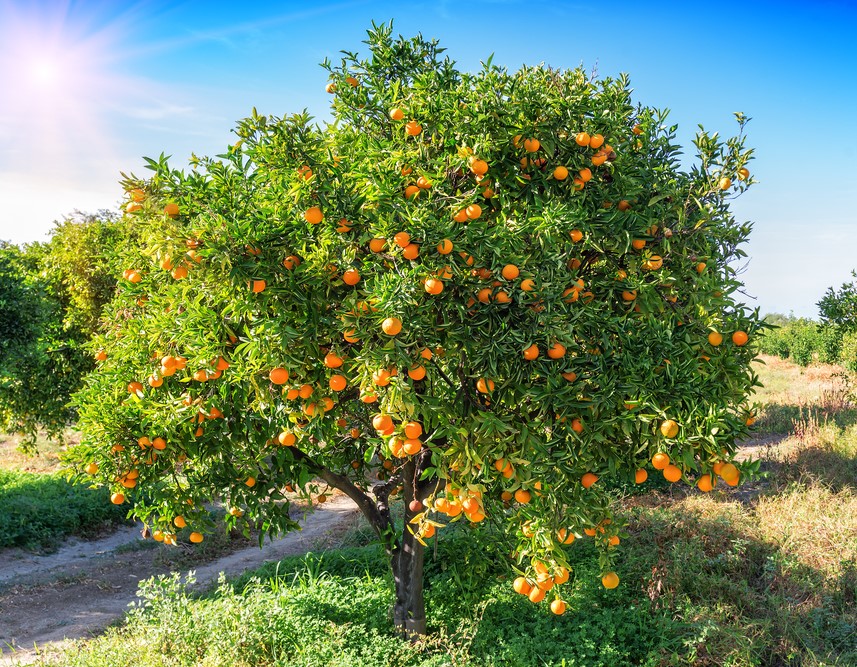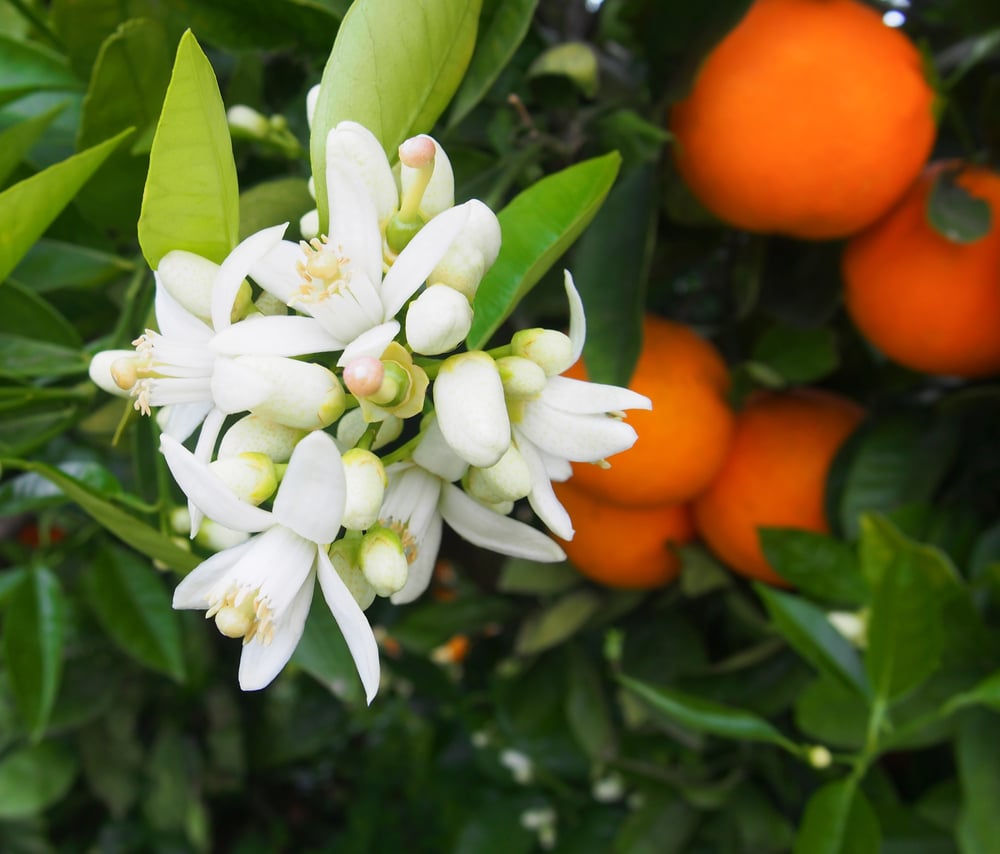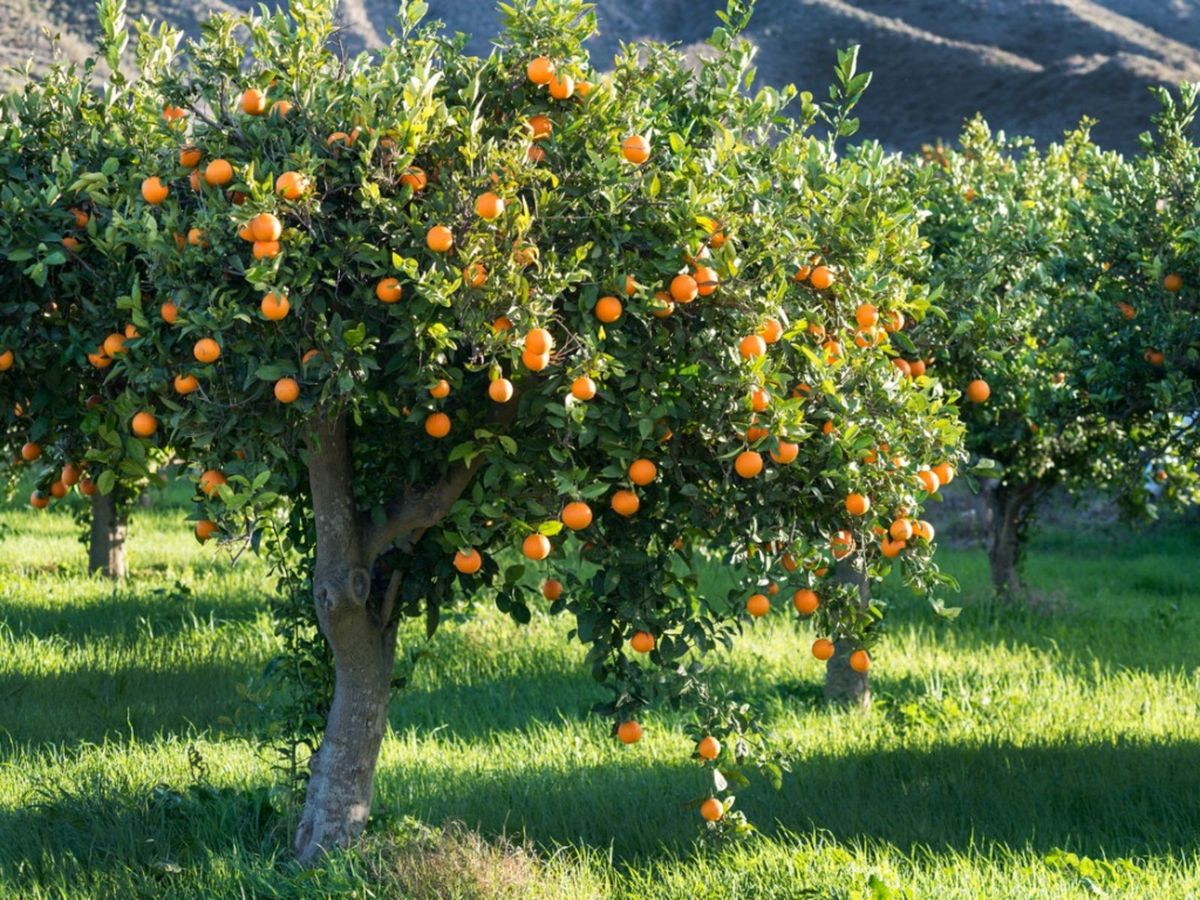
The orange tree is a symbol of success and prosperity. Its lush leaves and sweet fruit are a reminder to work hard and reap the rewards.
Orange trees are natural air purifiers, absorbing carbon dioxide and releasing oxygen. They also offer shelter for local wildlife and are a source of nectar during blossom season.
Fruit

The orange (Citrus sinensis) tree is a thorny evergreen, native to Southeast Asia and cultivated in tropical and subtropical regions worldwide. It produces fragrant flowers and fruits that vary in color and size. The fruit is a berry with an outer peel or rind that protects juicy flesh divided into segments. Oranges are rich in vitamin C and also contain a small amount of oil.
Sweet oranges, including Valencia and Shamouti varieties, are the most commonly cultivated species in this group. They originated from a wild ancestor in the area of Vietnam and China and were introduced to Europe in the 16th century by Christopher Columbus. He brought seeds of this fruit to the New World and they flourished in Florida, where modern commercial production of sweet oranges has its origin.
Besides being eaten fresh, the fruit of the orange tree is used for juice and marmalades. In addition, its rind contains essential oils that are extracted for use in perfumes and flavorings. Orange trees are also planted in citrus groves, or agroforestry systems, where they are combined with other fruit-bearing plants like grapes and lemons. The presence of other plants helps protect the soil from erosion and provides a high-quality mulch.
When grown properly, the orange tree can bear fruit for over 50 years. Various fungal and bacterial diseases can impact the health of an orange tree, and a variety of chemicals are available to prevent or control them. For example, small blistering spots or brown with yellow halos on leaves indicate citrus canker, which can be controlled by using copper fungicides. Yellowing leaves and spongy fruit may mean the tree has citrus greening, a bacteria transmitted by psyllids that can be managed with neem oil or insecticidal soaps.
The word “orange” is a transliteration of the Sanskrit naranga, which was translated into Old Persian and then into Latin and French. The word was then adopted into English, where it both referred to the fruit and to its color. In fact, before the English-speaking world was exposed to the fruit, the name naranga was used as a synonym for saffron because of the fruit’s intense color.
Leaves
Orange trees (Citrus sinensis) are deciduous, producing leaves in summer and fruit in autumn. Their foliage is a dark green that becomes a beautiful blaze of orange in fall. They’re grown as garden plants around the world and are widely cultivated in home gardens, often with their fruits picked and eaten directly from the tree. The sweet orange is one of the most popular varieties for human consumption, but the sour orange and navel orange are also common and just as delicious.
Orange-leaved citrus trees are very adaptable, doing well in a wide range of soil conditions and climates. They do best in full sun but are also well-suited for partially shaded sites and can tolerate drought. They’re not recommended for cold climates, however. If you’re looking for a deciduous orange-colored tree to plant in your yard, consider the smoke tree (Cotinus coggygria), which thrives in USDA zones 5-8 and produces small yellow blossoms in early summer before its leaves turn vivid orange in autumn.
Leaves on an orange tree have a distinct fragrance when crushed. They’re oblong to oval in shape and have an apical point at the top of the leaf, a petiole on the underside and an auricles near the base. The apical point, petiole and auricles are all covered with oil glands that produce the distinctive aroma of oranges.
Citrus leaves can be used in a number of recipes, both raw and cooked. For example, they can be wrapped around grilled or roasted meats or seafood. They’re also a great addition to salads, dressings and soups. You can also use them to garnish lemony or orange-flavored desserts.
Like all plants, orange trees and shrubs can suffer from disease and pests. It’s important to know the main symptoms of orange tree diseases so that you can identify problems and make changes to keep your plants healthy. If you notice any of these signs in your orange trees, take a closer look at the leaves and roots to get a better idea of the problem.
Flowers

Orange flowers (Citrus sinensis) are a perfumer’s delight. Their aroma is a light essence of citrus that is almost floral in nature. It is delicate and not too sweet. Many gardeners describe it as heavenly. The scent is a welcome change during the cold, blustery winter months.
The blooms, which are usually white, appear before the fruit and are a beautiful sight for the eyes and nose. They are harbingers of a bountiful harvest and adornments for bridal bouquets. They also have medicinal uses and are incorporated into herbal teas, infused into oil for skin treatments and sprinkled over bathwater to calm stress.
Citrus trees require a full-sun location to thrive, and flowering is a good indicator of the health of a tree. Flowering usually begins after the plant is two to five years old. During the growing season, water and fertilizer should be given sparingly to encourage healthy growth.
Proper pruning will enhance flower production. Plucking away dead or diseased twigs and branches will free up the limbs for buds to grow on. The timing of pruning is important; if you prune in late winter or early spring, the tree will have plenty of energy for blossom production. However, if you prune during the growing season, the tree may be too focused on preparing for fruit and will not produce as many flowers.
In the garden, orange trees can be grown in full sun with well-draining soil. It is not unusual for them to begin producing oranges after a few years of cultivation. However, the time it takes for an orange tree to start producing is dependent on a number of factors, including the variety, climate and site conditions, as well as weather.
The orange blossom is the state flower of Florida and is a fragrant symbol of good fortune. The tree and its fruits have a long history of cultivation, beginning in tropical Asia and spreading through the Middle East, India, Southeast Asia and Africa with the rise of civilizations and the expansion of trade routes. In the 1500s, Spanish explorers introduced oranges to South America and Mexico, while Europeans brought them to North America and Europe.
Trunk

The trunk (also called a bole) is the main wooden axis of a tree. It is found in both true woody plants such as oaks and hickory, and non-woody plants such as palms. A trunk is a vital part of the anatomy of trees; it is filled with living xylem cells that transport water throughout a plant, and store starch from photosynthesis.
The xylem is made of cells that have a special spongy interior. When a tree is injured, these cells can become swollen and ooze sap or gum. This can be caused by insects or disease. Infections such as sunburn cankers are usually limited to areas of a tree exposed to the sun, while mechanical injury cankers may appear anywhere on a tree.
A common problem that affects citrus trees is fruit splitting. This problem occurs when a tree takes up water from rain or irrigation and the peel expands too quickly, causing the outer layer of the skin to split across the bottom. This problem is exacerbated in high-temperature conditions and heavy crop load years.
To minimize this condition, ensure that your trees have adequate water supply during the growing season to maintain proper leaf and fruit growth. Also, avoid planting citrus varieties in low areas where storms can knock down fruit or branches.
Another important factor in reducing the incidence of splits is the management of the tree canopy to reduce leaf shade and promote rapid drying of the leaves. Planting citrus trees at the correct spacing is also important to allow for air movement and optimum sunlight exposure.
Oranges can be planted as seedlings or purchased as grafted trees. The best time to plant is in spring after the danger of frost has passed in your area. The rootstock must be a suitable match for your specific citrus variety.
In the urban environment, only male trees should be planted because female trees produce messy, odoriferous fruit. Several cultivars of this versatile tree are available in the Washington Metropolitan Area including: the evergreen, drought-tolerant osage orange and the fragrant, rot resistant thornless hedge orange.
